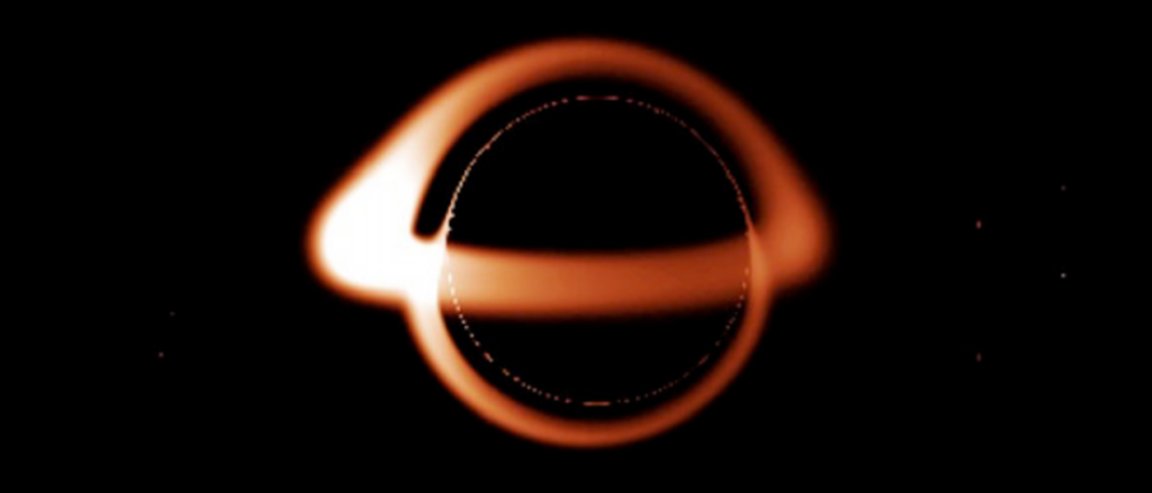
Black Hole Holograms
We all know black holes are strange. Very, very strange. After all, they represent a phenomenon where gravity becomes so strong it upends the laws of physics and challenges everything we know about reality.
One of the problems with black holes (among many) is that they seem to have no measurable entropy—essentially, what goes in never comes out, nor can anything be learned of its fate, a clear violation of that pesky Second Law of Thermodynamics. It’s called the “Information Paradox,” a situation that’s given rise to a lot of head-scratching over the years.
In an attempt to resolve the matter, physicists Stephen Hawking and Jacob Bekenstein proposed that a black hole’s entropy is proportional to its area, not its volume; roughly speaking, this solution means that, when it comes to a black hole’s innards (and the fabled singularity at its center), there’s just no there there. The information that’s supposedly lost never makes it to an “inside” that doesn’t exist—it gets encoded and preserved on the event horizon.

A further outcome of this solution, first proposed in the 1990s by Leonard Susskind, is that a black hole is not three-dimensional at all, but is actually a 3D illusion of an image projected onto an immense two-dimensional cosmic horizon.
Quantum Gravity and Spacetime Condensates
Got that? Didn’t think so.
It gets even weirder. A team of physicists led by Daniele Pranzetti of the Max Planck Institute for Theoretical Physics has hit upon a novel approach to the black hole entropy problem, by using what’s called “loop quantum gravity” to elucidate the mystery.
Loop quantum gravity (LQG) is an important contender for reconciling the very big with the very small—in other words, uniting general relativity (a description of gravity, which acts on enormous scales) with quantum mechanics (which explains the behavior of the other fundamental forces, which act on minuscule scales).
“The idea at the basis of our study is that homogenous classical geometries emerge from a condensate of quanta of space introduced in LQG in order to describe quantum geometries,” says Pranzetti.
Using the loop quantum gravity framework, spacetime is described as discrete “quanta”—analogous to photons, the quanta of light, or the proposed “gravitons,” the quanta of gravity—at the Planck length (1.6 x 10-35 m), a dimension at which reality assumes some very unusual properties.

The team considered a scenario in which these spacetime quanta are assembled into a “condensate”—which can be though of as very much like a fluid. The “fluid” in this case is the spacetime continuum itself, and just as the properties of water can be understood by studying the behavior of the atoms it comprises, so can a spacetime condensate be understood by studying the discrete grains of space whereof it is composed.
So the idea is that if a black hole is made of a spacetime condensate, and you study the spacetime quanta that make up the event horizon, presumably you can find out everything that’s going on inside the gravitational monster—including measuring its entropy. And voilà!—no more information paradox.
The authors claim their work demonstrates an important mechanism that supports the “holographic hypothesis” about the nature of black holes. And if you think that the holographic nature of black holes matters not a whit to anyone but scientific eggheads…it’s time to think again.
Some researchers have even proposed that our entire universe is nothing more than the three-dimensional, holographic event horizon of a 4D black hole formed from the collapse of a 4D star in a hyperdimensional spacetime.
Chew on that, know-it-all.